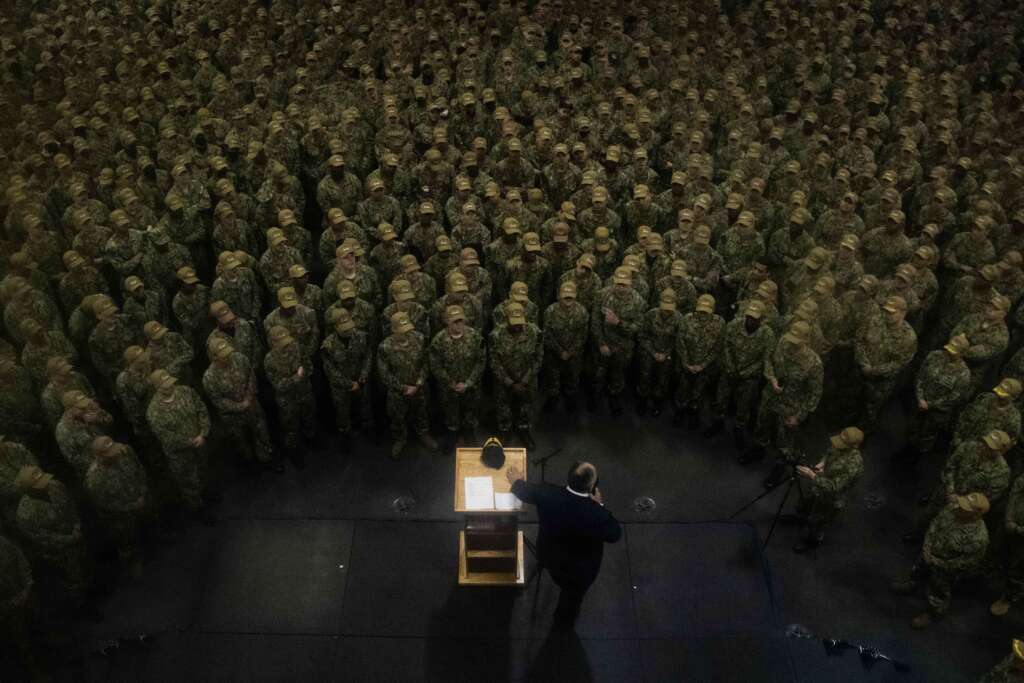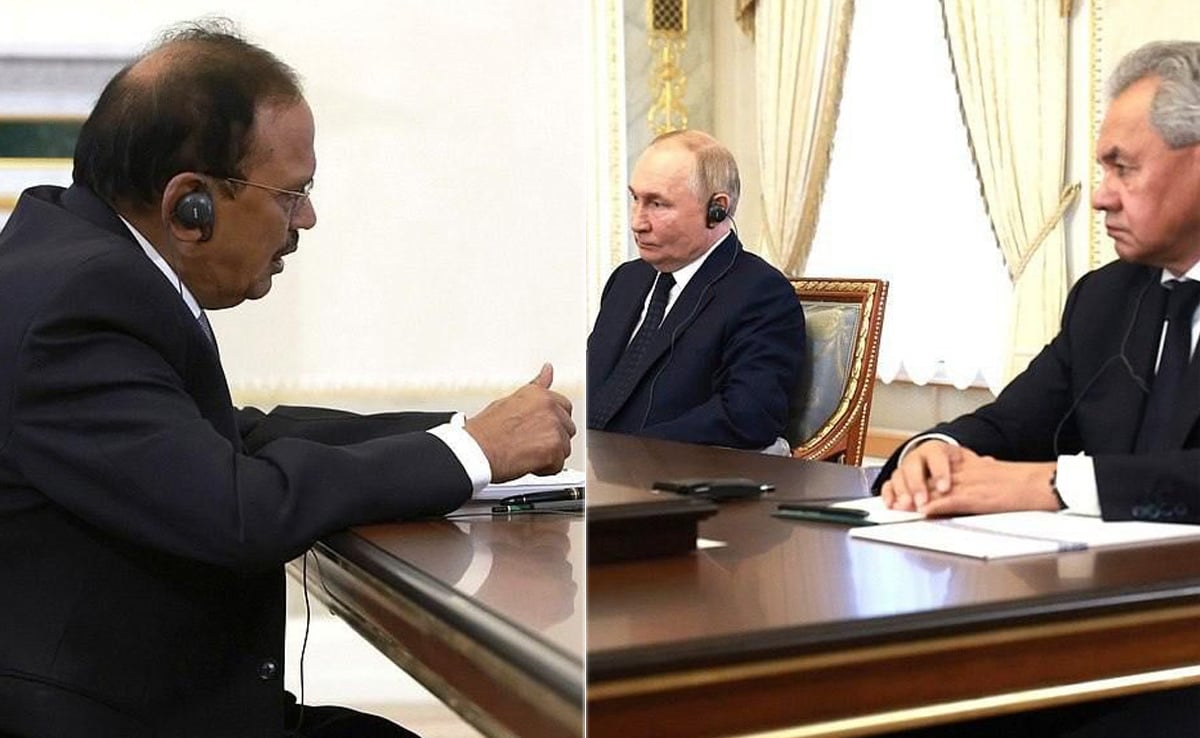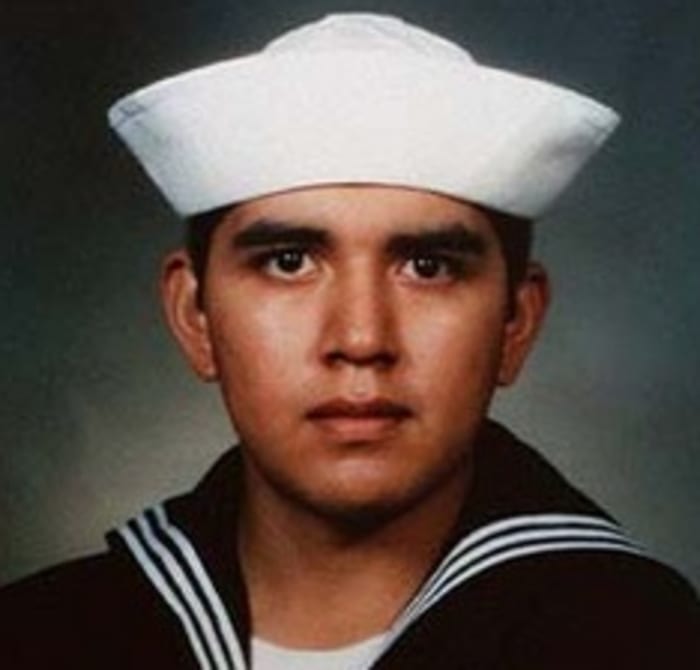
More than a half century has passed since the U.S. ended the military draft. The Selective Service System still requires males to register at 18, but that’s about it. Given the state of the world, should the nation be better prepared to re-start conscription? My next guests say, well, yes. From the Center for a New American Security, research assistant Taren Sylvester and senior fellow Katherine Kuzminski joined the Federal Drive with Tom Temin.
Tom Temin So what is your thesis here, that not that we should have a draft, but that we should be better prepared to reinstate the draft should some emergency occur?
Katherine Kuzminski That’s correct. So if we were ever in a position where a draft would be called, and rightfully a draft would take all the political capital of a sitting president and members of Congress, that tells you how dire the situation would be. And so in that event, we would want to make sure that we were prepared to actually execute a draft effectively.
Tom Temin Right. Because the purpose of the Selective Service system, which is going alive and strong, is do they even have nice swag, is to be able to help the nation should an emergency arrive like a war with China, God forbid. But it would take large scale mobilization.
Katherine Kuzminski That’s right. So the Selective Service system registers men between the ages of 18 and 26 currently, and maintains information on very basic information, their names, their date of birth, their Social Security number, their address and their email address. But it provides a database for the federal government to access in the event that they needed to mobilize a draft.
Tom Temin And even that registration is voluntary.
Katherine Kuzminski So, yes and no. It requires individuals to register themselves. And in fact, there is a provision in the House markup of the NDAA that would just make it automatic. But there are requirements for men between the ages of 18 and 26 to register for the draft. And in fact, you can’t apply for a federal job if you haven’t registered for the draft. Theoretically, to fill out a FAFSA for student loan aid or student aid, you need to have registered with the draft. Although the kind of automated process between filling out that FAFSA and making sure that men are registered with Selective Service went away a few years back in an effort to streamline the FAFSA process.
Tom Temin And Taren, in your research, you found that a lot of nations that might surprise you to be named have reinstated the draft or even looking at it seriously in recent years?
Taren Sylvester Yeah. You’re seeing a lot of countries in Europe and in Asia, especially trying to go back to a more conscription involved model. So I’m thinking along the lines of, Taiwan had originally pared down their conscription model significantly in the last couple of years. They started upping it again, expanding the requirement for service from a couple of months to closer to a year. In places like Norway, Sweden, Finland, they’ve had conscription for a long time, but they’re expanding who it applies to. So for Norway, conscription is mandatory, but they have more people than they need. So only about 15% of their population that turns 18 every year actually serves. But of that population, 36% of it in 2023 were women.
Tom Temin Interesting. And the reasoning for these countries going this way, is it because they’re afraid of Russia and China, or is it more maybe they feel that it’s an equitable way to ensure public service?
Taren Sylvester In the countries that are including women in their conscription models, it’s kind of both. So if they have a conscription model at all, it’s usually because they feel a looming threat or a history of threats in the region. But if they are including women, it might be because they perceive the challenge to their society as being so existential that it would require movement. But it could also be that it’s an equality measure in that all citizens should be serving.
Tom Temin We are speaking with Research Assistant Taren Sylvester and Senior Fellow Kate Kuzminski with the Center for a New American Security. And that question of women also in registering in the United States Congress looks at bills every year on that. They don’t seem to go anywhere. That seems like a really odd leave out considering that those that volunteer for the Armed Forces women can serve in virtually every role, including combat.
Katherine Kuzminski That’s correct. So we saw in the wars in Iraq and Afghanistan that women were serving and functionally in combat positions even before they weren’t legally allowed to be in military occupational specialties where they were excluded. We have seen an evolution of the legal discussion about women and the draft or women in registration. So in the early 90s there’s a lawsuit against the Selective Service saying that an all male registration draft registration was unconstitutional. And at the time, because only men could serve in combat positions, it was determined that actually this was part of Congress and the president’s responsibility to defend the nation. And therefore, it was constitutional. After the lifting of combat restrictions on women in 2015, there was a case that made it up to the Supreme Court, but that the Supreme Court did not hear back in 2019, making a very similar argument, and saying that now that women can serve in all combat positions, they should in fact be required to register with selective service. The Supreme Court didn’t hear that case because they were awaiting a congressionally mandated study on military, national and public service, which came out in March of 2020, right as the pandemic kicked off, that recommended that women register for Selective Service along the lines of their role as citizens in the United States. But we were really thinking about it in terms of the operational requirements, and it’s very likely that should a draft actually be enacted in the future, there would be legal standing for a case that says actually it’s unconstitutional for women to be excluded from the draft and for men to have to register with selective service, which may throw all kinds of wrenches in the system as it works its way through the courts at a time when we’ll really need to act quickly and where time will be of the essence.
Tom Temin And could there be the case for, say, some kind of hybrid system? The military services have been missing their recruiting goals every year and the population even eligible by virtue of background activities or weights or whatever the case might be. It makes fewer and fewer people actually eligible. Could a system be, Well, we needed 50,000 more across the armed services that we couldn’t get this year, Guess what, you’re a soldier now, with some kind of a lottery or some kind of randomized system just to fill in the ranks with conscripts. I can’t imagine actually happening. But could that be a possibility?
Katherine Kuzminski I think we see that in other countries. I think that it would be a challenge in the United States. When we shifted from a mixed force of conscripts and professionals back in 1973 to the all volunteer force, we really did gain quite a bit of professionalism in the force. And there’s also just broader questions of individual choice and in a non-existential environment that I think going to be a tough sell for the American people, and a tough sell for Congress. I think it would also be a tough sell for those who are in the military currently, who have maintained very high standards and have a sense of professionalism and dedication to service. That’s actually a challenge that we’ve identified, is that the all volunteer force is not trained or equipped to receive a bunch of conscripts if we were actually in a combat situation.
Tom Temin That comes up a lot. The military is cited as not really wanting this for itself. They’d rather have the recruiting problem, because if everyone is universally serving, then they get to ingest every societal problem and ill every game playing, drug addled, whatever. But coming in, did they have to fix, so to speak, in basic training and it becomes an enormous challenge for the military apparatus.
Katherine Kuzminski Yeah, that’s right. I think basic training is already challenging for people who are choosing to be there, and it adds another layer of complexity for those who may not be choosing that.
Tom Temin And Taren, when we talk about a draft, what it looked like it did way back when, when everybody would hold their breath wondering what number would come up in the little balls, would be plucked out of the rotating sphere.
Taren Sylvester To a degree, the the actual process would be the same. But I think the draft in the future scenario would look less like it did in Vietnam and more like it did during the world wars. So we’re kind of sitting at a situation today, I think that’s much more similar to what we were in World War I, where it’s been 50 years since we’ve had a draft and we’ve had the benefit of time to look back and be able to set up a better system than what we had before. But also, you have to think that the Vietnam draft was a legacy of Korea, which was a legacy of World War II. And before the World Wars, there was no standing military. The military tradition was a very, very small, regular army that expanded with militia forces if it needed to. Whereas today, as Kate was mentioning, since 1973, we’ve had the all volunteer force and we have a large standing military that will meet our regular missions. The only case for a draft is to make up the numbers in a long term protracted warfare. The draft is not an immediate fix and an immediate surge of manpower. That’s what the reserves are for, that’s what the National Guard is for. And it’s the legacy of Vietnam that really integrated the Reserve and the Guard into the force structure of the military that we saw in Iraq and Afghanistan.
Tom Temin So, Kate, it sounds like now the challenge is at least getting congressional and other leaders to simply understand what’s at stake and how it could work. And hopefully that tool never needs to be pulled out of the toolbox.
Katherine Kuzminski That’s right. And we see that as having a deterrent value. So the ability to signal to the People’s Republic of China or any other would be adversaries that we could functionally execute a draft would send a strong signal, particularly that nations that might be fearful of a protracted conflict. We can demonstrate that we’d be able to execute a protracted conflict at scale that may be enough to deter any would be adversary.
Copyright
© 2024 Federal News Network. All rights reserved. This website is not intended for users located within the European Economic Area.



